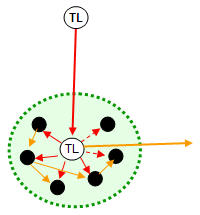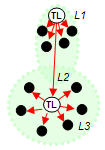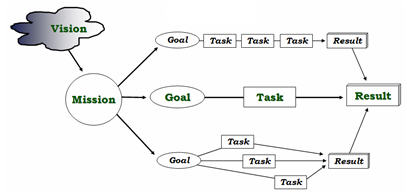
  Strategy - External A1 Link represents the mission given to the L2 team (its purpose, charter), fulfilling a goal of the L1 team B1 Link represents delivery of L2 team’s output to a customer
Tactics - Internal Internal roles and workflow links the L3 tasks required to deliver the result
|
Purpose Hierarchy Defines Team Missions and Workflow Roles
